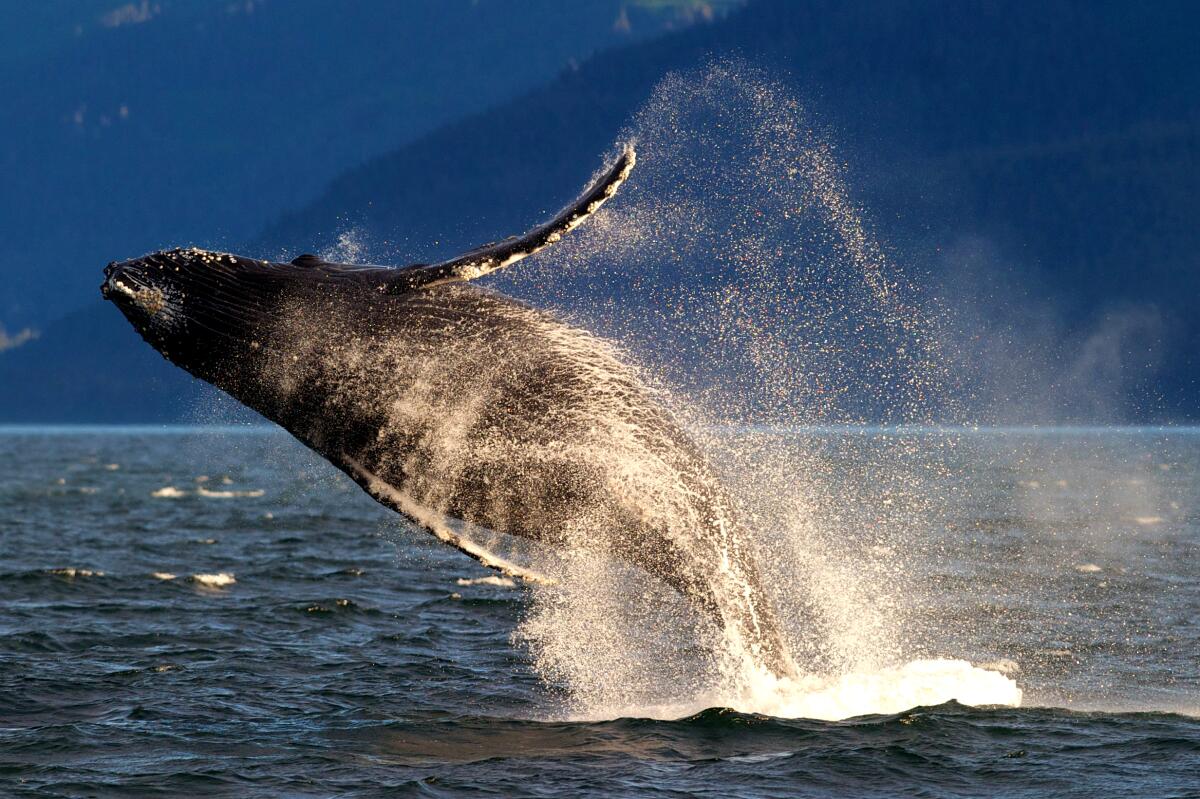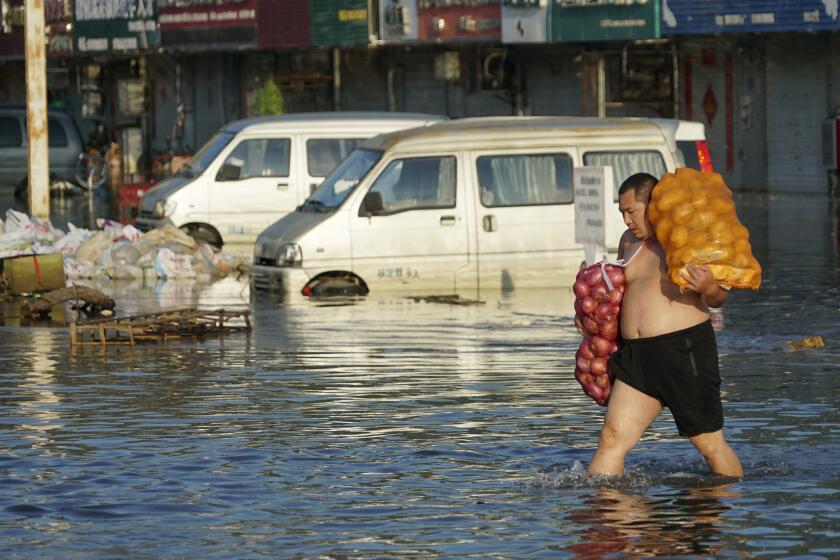Op-Ed: How an encounter with humpback whales keeps me inspired in the climate change fight

As our boat slowly traversed a large channel south of Glacier Bay National Park and Preserve in southeast Alaska in June, my friends and I estimated that we were surrounded by more than 30 humpback whales. There was no wind. No other boats. The water was flat and calm with bright skies overhead. We cut the motor, floated and listened. Sound traveled easily. I could hear multiple blows â long âpa-too-ishâ whale exhales â some close, some against the shore, all seemingly orchestrated. The surround sound of forceful explosions of air made it feel as if the Earth was taking a long restorative breath.
These synchronized blows feel to me as if they are a kind of respite to the dire consequences of climate change spelled out in the sixth report from the United Nationâs Intergovernmental Panel on Climate Change, or IPCC. It was written by more than 100 international experts and is the most conclusive report yet linking extreme weather events to climate change. U.N. Secretary-General AntĂłnio Guterres described the IPCC report as âa code red for humanity.â It also is a code red for the creatures we share the planet with both on land and in the ocean.
The impacts of climate change on our oceans can be less visible than what we see on land but are just as dramatic. When we hear about another heat wave, we should remind ourselves that there are also marine heat waves, warming events that can destroy coral reefs and decimate populations of fish and seabirds. Marine heat waves have doubled since the 1980s and are expected to become 20 to 50 times more frequent. For every headline about blazing wildfires, we need to think also of ocean acidification, caused when the pH of oceans falls as they absorb the extra carbon dioxide released by burning fossil fuels. The more acidic our oceans, the more shells and bone structures dissolve. This affects everything from zooplankton to whales.
The humpback whales we encountered feed on herring and small forage fish. They eat more than 2,000 pounds of food each day. Herring compose a major portion of their consumption. And what do the herring eat? They eat small sea snails, pteropods (a type of mollusk) known as sea butterflies, which have a winged foot held in place by a small, internal shell. The sea butterfly cannot survive without its shell.
In 2014, PBS reported on a National Oceanic and Atmospheric Administration study that found that more than 50% of pteropods, including sea butterflies, sampled from between Central California and northern Washington, had âseverely dissolved shells.â If the sea butterfly population declines, then herring populations decline. Itâs a short food chain jump from this to negative effects on humpback whales.
Right now, in my Alaska backyard, the whales are doing fine. They are rhythmically breathing. They do not know what awaits these cold waters that must absorb more and more carbon. For decades the oceans have acted as a buffer against global warming, absorbing roughly a quarter of the carbon dioxide that we emit from burning fossil fuels. The ocean also absorbs more than 90% of the excess heat trapped on Earth by carbon dioxide and other greenhouse gases. Keeping the oceans clean and vibrant is a vital part of combating climate change.
What we do on land to scale up clean energy and reduce greenhouse gases will make the biggest difference for the oceans. Thus, we need our leaders to think of what we do on land, such as establishing refuges and national parks for better land and wildlife protection, and advocate that we do the same for the ocean.
The Biden administration is working in the right direction with its goal of conserving 30% of U.S. lands and waters by 2030. In June, 90 environmental and marine scientists sent a letter to President Biden asking him to establish more marine national monuments to protect federal ocean ecosystems as a way of reaching this goal. This is what comes to mind when I think about my exceptional day with the whales in Icy Strait.
On the way back to our cabin, our group kept our eyes on a small group of humpbacks. Just as I was pointing them out to a friend, three whales suddenly breached at the same time, close together, with a half-twist to their landing. Then as if to say, âfor the finale,â a fourth whale breeched in their unfolding wake. Never in my 44 years in Alaska have I seen such a show of might and grandeur.
My work in the natural resource field and as a longtime climate activist gives me a lens to see that if the whales stop breathing, we stop breathing. Our well-being is entwined. The IPCC report makes it clear that time is not on our side. The actions I take to reduce my carbon footprint and engage my community and state to decrease emissions and invest in resiliency are just as much for the whales Iâm privileged to live with as they are for me.
The U.N. says global warming is likely in the next two decades to pass 1.5 degrees Celsius â the ambitious target of the 2015 Paris climate agreement.
Kate Troll is the former executive director of United Fishermen of Alaska and served as a fishery development specialist for the state of Alaska.
More to Read
A cure for the common opinion
Get thought-provoking perspectives with our weekly newsletter.
You may occasionally receive promotional content from the Los Angeles Times.











